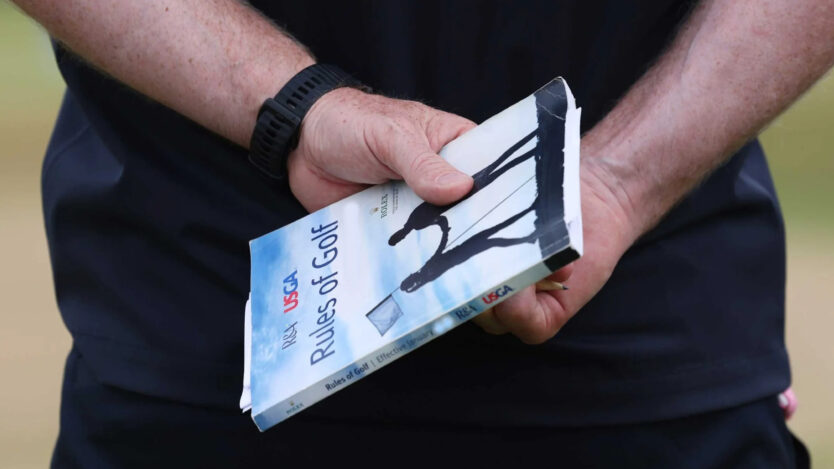The New Year has brought some Rules of Golf changes that industry professionals really ought to be aware of. We’ve summarised the most important for you.
This article is part of GCMA Insights – topical content for golf industry professionals, discussing the things that matter to those who work in golf clubs.
Happy New Year to you all – but the start of 2023 has brought with it more than just a hangover and a dozen resolutions we’ll never stick to.
Some interesting changes to the Rules of Golf came into force on January 1 and they might have been easy to miss during the festive frolics of Christmas pud and endless repeats of Only Fools and Horses.
So as you head back out onto the fairways in a bid to shed some Yuletide pounds, let’s recap six of the biggest changes you’ll need to know…
There’s a new way to take back-on-the-line relief
It’s no longer an automatic re-drop if your ball bounces slightly out of your relief area. Now, when you drop your ball on the line, the ball must come to rest within a club-length of where it is dropped. That can be in any direction and, yes, that includes forward.
Get involved in the debate.
To join the GCMA, click here, or to organise a call with a member of the GCMA team, just complete the form below.

No more penalties for forgetting to put your handicap on your scorecard
It used to result in disqualification. But an amendment to Rule 3.3b (4) means you are no longer required to show your handicap on your scorecard.
Competition committees now have the responsibility of ensuring the accuracy of your handicap and calculating it for the competition.
Clubs can, however, bring in a new Local Rule that puts the onus back on the player to get it right.
And you might not even disqualified for not signing it…
Disqualification was also coming your way if your hole scores on your scorecard were not certified by you, your marker, or both of you.
Now clubs have another option. Where they feel it to be appropriate, they can bring in a Local Rule that modifies the penalty of a scorecard missing a player or marker certification to two shots, which would be applied to the last hole of the round.
WHY JOIN THE GCMA?
Membership of the GCMA unlocks a network of like-minded professionals, provides you with support in your professional and personal development, and provides you with a multitude of benefits. Whether that’s the tools that will help you to excel in your profession, or a wide range of services to support your wellbeing, signing up to the GCMA is joining a community.
Don’t stand behind your partner when they’re taking a stroke
Rule 22.6 in foursomes and Rule 23.8 in fourballs bans a player from doing this while their partner is making a stroke to “gain information for their next stroke”.
You can replace a club that’s damaged during a round
This is a change to Rule 4.1a (2) and it allows players to replace a club that is damaged during a round. The caveat is the club must not have been damaged through abuse.
Ball moved by natural forces?
There is a new exception to Rule 9.3, which says that if a ball at rest is moved by natural forces after being dropped, placed, or replaced and “comes to rest in a different area of the course or out of bounds”, the ball must be replaced and played from its original spot.
So if you’ve ever watched in horror as your recently dropped ball crept back into that penalty area, worry no longer. You’ll just put it back where it was.
You can find out more about the new 2023 Rules of Golf by visiting the R&A and USGA websites.
This article is part of GCMA Insights – topical content for golf industry professionals, discussing the things that matter to those who work in golf clubs.
Get involved in the debate. To join the GCMA, click here, or to organise a call with a member of the GCMA team, just complete this form and we’ll be in touch!



